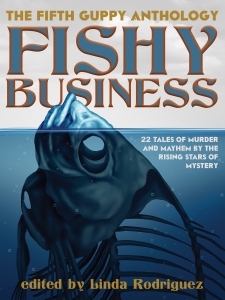 I can only speak about how it works for me. I am impelled to start a story in several ways. The first way is that a story just springs to mind, something I have to write, or perhaps a character that fascinates me, that I must build a story around. Another way is a contest or event, like Bouchercon, that solicits stories. A third way is a journal, online or print, that I respect and want to get into, so I come up with a story I think they might like. The fourth way is “the call.”
I can only speak about how it works for me. I am impelled to start a story in several ways. The first way is that a story just springs to mind, something I have to write, or perhaps a character that fascinates me, that I must build a story around. Another way is a contest or event, like Bouchercon, that solicits stories. A third way is a journal, online or print, that I respect and want to get into, so I come up with a story I think they might like. The fourth way is “the call.”
Here’s how it goes: An editor puts out a “call” for an anthology centered on a theme, let’s say, crab traps or antique tennis balls. He or she helpfully includes a link to a website devoted to such items. The theme is one I feel an affinity for, so I click on the link. Sure enough it’s a wealth of information. For instance, the evolution of the modern tennis ball, famous collectors of antique tennis balls, how to spot a fake antique tennis balls, antique tennis ball events, conventions, etc. in your geographic area, the astronomical price a rare antique tennis ball fetched at a recent auction, and on and on.
Reading through the site I jot down a few facts or whatever that intrigue me. I let that simmer for a few days, as ideas for plots and characters flit through my mind. Nothing gels. I go back to the site and find more ideas. I have them all on a list on a yellow pad.
Finally my thoughts seem to circle around one particular image or fact. I mull that over, adding possible motives for murder, weapons, locales. Eventually, I come up with the scaffolding of a story. I begin to add timelines, bits of dialogue and motivation. Character descriptions get fleshed out.
At this point, I can talk it over with someone, either a critique partner or someone else who’s gets what I’m doing. As I tell the story, it’s structure gets clarified in my mind. My listener may suggest tweaks or point out weaknesses. The story gets better. At this point, I’m ready to start the first written draft.
I write about one-third of the story. This is where I stop. I’m convinced the story is lame, the dialogue unnatural, the characters mere puppets, the motivation for the crime not believable, and it doesn’t include enough connection to the prompt.
Okay, maybe all those things are true, I say to myself. But so what? You’re halfway there, you’ve done all this work, why not finish it. Then decide whether to junk it or polish it and submit. And, after a few days, I do, in spite of having little faith. Because part of me really likes this story. The fun part kicks in again. I want to see it through. I finish the first draft, let it rest, revise, improve, revise, improve, falling more in love with it all the time. At last I take a breath and send it off. Does it get accepted? Sometimes. Sometimes not. Either way, there are always more “calls”, more jogs to the creative mental forces to generate new stories. With those that don’t get accepted at the initial market, I build up an inventory. With revision, I’ve placed older stories in new markets. I also get better all the time. It’s a process. It repeats itself. It works for me.






Lida, I love reading about other author’s processes. Thanks for sharing yours. It is obviously working for you.
LikeLike
And thank YOU for suggesting the topic. Lida
LikeLike
Well written ways your creativity works to weave your stories!
Sent from my iPhone
>
LikeLike
Thanks, Van. It helps me to clarify my own methods. Lida
LikeLike
I enjoyed reading about how you work through the process of a new story. I was also laughing about all your tennis balls examples.
Wonderful post!
LikeLike
Thanks, Trisha. Let’s face it, some of those dedicated sites are exactly like that! Out there, but fun. It’s amazing all the niche things people can be interested in. Lida
LikeLiked by 1 person
Lovely little essay, Lida. Miss you! Leslie
LikeLike
Thanks, Leslie, hope to see you soon. Lida
LikeLike